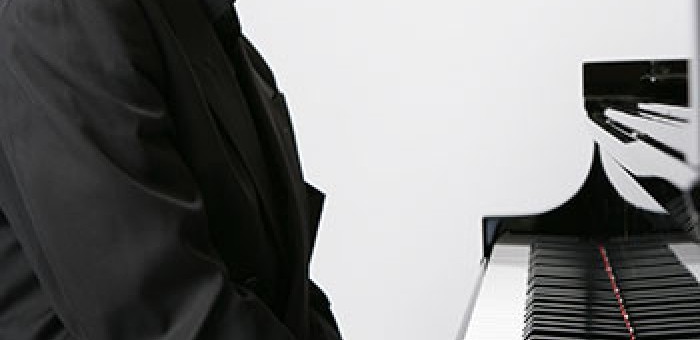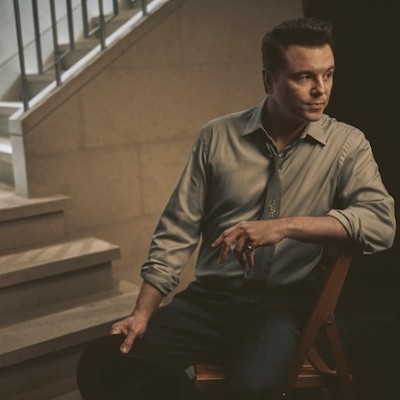Dec 9, 2025 12:28 PM
In Memoriam: Gordon Goodwin, 1954–2025
Gordon Goodwin, an award-winning saxophonist, pianist, bandleader, composer and arranger, died Dec. 8 in Los Angeles.…

McCoy Tyner (Photo: John Abbott)
(Photo: )As part of Jazz at Lincoln Center’s John Coltrane Festival this fall, McCoy Tyner was a natural choice to tap into “The Gentle Side Of John Coltrane,” a two-night presentation in The Allen Room that borrowed its title from an early Impulse! compilation that highlighted the legendary saxophonist’s gift for balladry. As the sole surviving member of the now seminal John Coltrane Quartet, the 73-year-old pianist honored his late friend and mentor with reinterpretations of classic Coltrane repertoire performed by a cast of carefully chosen musicians including drummer Jack DeJohnette, bassist Dave Holland and saxophonist Gary Bartz.
Known for his intense left-hand style and a vast melodic range that can shift from symphonic to blues in a single tune, Tyner is one of the most influential musicians of our time. Mirroring Coltrane’s modal style, Tyner’s gift has always lain in his ability to both stand out from and complement any rhythm section with ease.
A contemplative opening statement by Tyner set up Bartz’s entrance on the Billy Eckstine-penned standard “I Want To Talk About You.” Bartz’s unwavering control of the tune mirrored Coltrane’s direct approach to the number, much like a vocalist who sings only for you in a crowded room. The focus of the tune shifted from melodic to undeniably rhythmic as DeJohnette and Holland added another layer of emotional heft.
Tyner’s opening on “Naima,” a tune Coltrane penned for his first wife, created both tension and atmosphere with a flurry of notes that built into a wonderful crescendo. He released that tension, and with the help of Holland and DeJohnette, the number shifted into a quiet, rhythmic samba, a nice counterbalance for Bartz’s alto sax to stand out. On “Naima,” Tyner’s decision to close out the set with his original composition “Search For Peace,” from The Real McCoy album (Blue Note, 1967), was an inspired one.
It’s been more than 50 years since Coltrane and Tyner formed a musical partnership that not only revolutionized modern music but drew inspiration from turbulent times in order to paint a broader picture. DownBeat sat down with Tyner prior to his tribute concert to discuss how he fell in love with the piano at first sound, and how Coltrane’s ear would forever change his life.
I read somewhere that you started out playing piano in your mother’s hair salon.
I was born in West Philly. My mother was a beautician who loved piano. There were neighbors who had pianos—maybe about three of them—and the ladies were my mother’s customers who would get their hair done. I noticed that whenever we’d go to somebody’s house that had a piano, she never studied it, but she would tinkle on it, and I liked the sound of it. She asked me, “Would you like to study piano?” I said, “That’ll be great mom, thanks!” Now, we didn’t have a huge house because her beauty shop was connected onto the rooms, and we lived above and behind the kitchen. So she bought me one and put it in the beauty shop. I was about 13 when I started studying. As I got older, I had an r&b band, and then we went to jazz. The ladies would get their hair done and tap their feet [laughs].
What led you to become a jazz pianist?
In the beginning, I had an r&b band. But older jazz musicians had heard about me, and as I got more experienced playing, they called me for some gigs. Bud Powell had heard about me—he moved into my neighborhood. He was my hero. He lived around the corner from me. I’d look out of the windows—my mother had these big windows—and I would see Bud standing there listening to the jam sessions. So my hero was listening to me when I was a teenager [laughs]! I would invite him to “come on in and play for us.” I had a really beautiful upbringing and exposure when I was young.
When did you first meet John Coltrane?
It had to be sometime in the late 1950s. [Coltrane] went to New York, and he took up residency there because that was the city where everything was going on. New York has always been a great place for culture—music, art, etc. Miles Davis had heard Coltrane and had him in his band, so he did a lot of recordings with Miles. He came through [Philadelphia] a lot because he grew up here. He was walking by and he heard all the jam sessions in my mother’s shop. We met eventually, and when he came back home for a while, he made some of the sessions just for fun. He turned to me and said, “I’m gonna form my own band, and I’d like for you to play in my band.” I said, “Great, I would love that,” because he was one of the most foremost horn players and musicians, period.
Did Elvin Jones and Jimmy Garrison come on board around the same time?
Not really. Jimmy was from Philly, too. And Elvin Jones, I had heard about Hank [Jones] because they were brothers. I really admired Hank’s playing, especially his recordings. I didn’t really know Hank personally but his recordings really impressed me. John knew Elvin, so when he formed the band he [also] wanted Elvin to join the band. It all came together. It was John’s band, and the thing is he knew what he had in mind. He tried to pick people who would be able to deliver that. The key is that you have to know the people you’re working with so that you make the right musical decisions.
Your upcoming tribute concert to John Coltrane at Lincoln Center will focus heavily on the “gentle” side of his compositions. Please talk about Coltrane and his approach to some of his now timeless ballads.
He was a very lyrical musician and very dynamic as well. And he used to practice a lot. Whenever he would pick up his horn, you know. If we were playing a gig or something, he would maybe go in the dressing room and pick his horn up. He always had something to explore—he was an explorer. He was always looking for something new and he would always be practicing. [He was] lyrical like a singer, [but] who could play the saxophone. He had a great talent for composing.
What did your time with Coltrane give you as both an artist and composer in your own right?
I always composed. That’s one of the things that I can do—I love composing. I wrote a lot of songs in the beginning of my career. I was learning how to play and learning how to play with older musicians who were more experienced than me. The whole experience was very important to my development.
—Shannon J. Effinger

Goodwin was one of the most acclaimed, successful and influential jazz musicians of his generation.
Dec 9, 2025 12:28 PM
Gordon Goodwin, an award-winning saxophonist, pianist, bandleader, composer and arranger, died Dec. 8 in Los Angeles.…

Flea has returned to his first instrument — the trumpet — and assembled a dream band of jazz musicians to record a new album.
Dec 2, 2025 2:01 AM
After a nearly five-decade career as one of his generation’s defining rock bassists, Flea has returned to his first…

“It’s a pleasure and an honor to interpret the music of Oscar Peterson in his native city,” said Jim Doxas in regard to celebrating the Canadian legend. “He traveled the world, but never forgot Montreal.”
Nov 18, 2025 12:16 PM
In the pantheon of jazz luminaries, few shine as brightly, or swing as hard, as Oscar Peterson. A century ago, a…

Dec 11, 2025 11:00 AM
DownBeat presents a complete list of the 4-, 4½- and 5-star albums from 2025 in one convenient package. It’s a great…

Seth MacFarlane takes a turn from his television and film career to sing arrangements made for Frank Sinatra, but never recorded.
Nov 18, 2025 12:04 PM
“I’m not gonna lie to you — I don’t know why I thought this was about The Naked Gun, but I’m happy it’s…